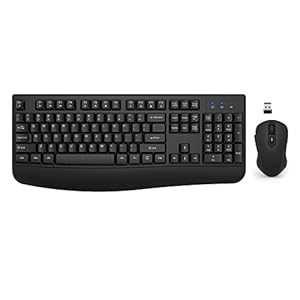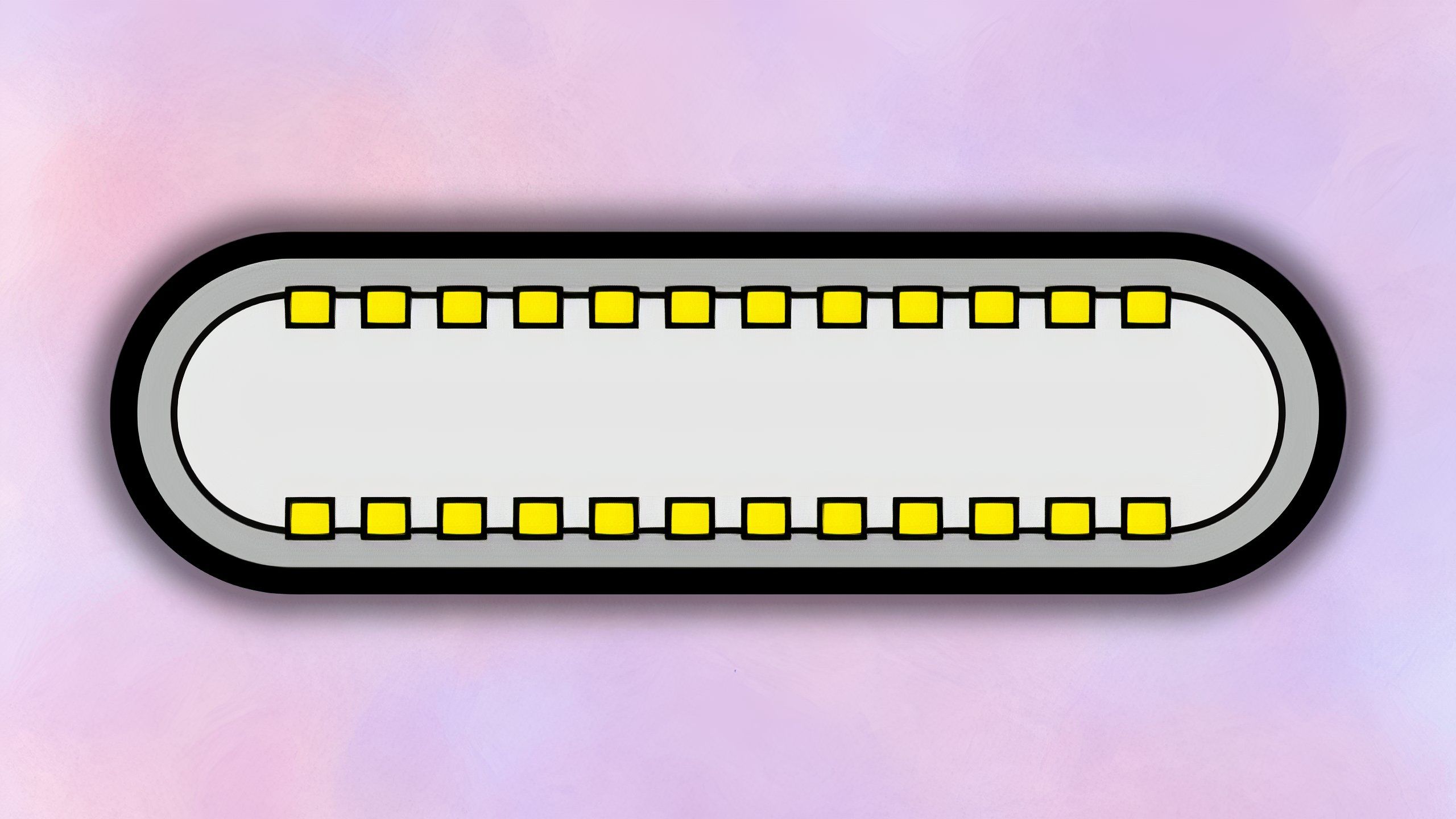Abstract
- USB-C is a common connector that helps quite a lot of completely different and complicated requirements.
- There are numerous quick charging and information switch choices on USB-C, however compatibility varies between manufacturers.
- USB-C provides adaptability, but it surely comes at a critical value for anybody on the lookout for the very best expertise.
Apple needed to be dragged kicking and screaming to help USB-C on the iPhone, however now that it does, you solely want one cable to cost all your units. The method began on the iPad Pro in 2018, and the corporate’s MacBooks in 2015, however did not come to the iPhone till the discharge of the iPhone 15 in 2023. The irony is that Apple was an early adopter of Kind-C connectors due to the pliability it provides it to create sleeker units with fewer ports. The corporate primarily did not like giving up its ecosystem of Lightning adapters and equipment.
It was the European Fee that finally pressured the corporate to play ball when it passed a law in 2020 that may require all smartphones to characteristic a USB-C port by the tip of 2024. The governing physique needed to scale back e-waste, however USB-C had apparent benefits, too. Not solely can USB-C help charging and information switch on the similar time, it additionally permits ports to imagine the position of devoted DisplayPort and HDMI ports.
Much more importantly, Kind-C connectors are reversible. Whereas utilizing one cable for every little thing is handy, the flexibility of USB-C and the assorted charging and information switch requirements is not. And within the decade since USB-C was first launched, issues have not gotten a lot better. Everybody signed on for an easier connector, however finally, they have not gotten an easier expertise.
USB-C achieves the dream of a common connector (on paper)
Charging and information switch in a single adaptable little plug
USB-C was launched in 2014 by the USB Implementers Forum, a requirements physique composed of main tech firms like Apple, HP, and Intel. The specific aim of USB Kind-C (usually shortened to USB-C) was to create a compact and reversible alternative for the USB-A and MicroUSB connectors discovered on the vast majority of electronics on the time. USB-C would not unify all of them below one adaptable connector, making it attainable — with the Kind-C’s 24 completely different steel pins — to make use of the identical cables and ports throughout desktop computer systems, laptops, and the rising panorama of cellular units.
The issue with the Kind-C connector being so versatile, is that as new revisions and enhancements have been launched to USB, it obtained more durable and more durable to inform which cable or port supported what.
Save for just a few more moderen Kind-C unique requirements, USB-C is appropriate with the majority of USB generations that have been launched earlier than it, from USB 2.0 all over USB 4 (the naming conventions aren’t purported to be deliberately complicated, but it surely definitely looks as if they’re). When USB-C first grew to become out there, it noticed early adoption from firms trying to supply streamlined units with fewer ports. You may theoretically cast off having separate USB and energy connectors and bundle all of them collectively below one USB-C port, for instance. Apple particularly used the brand new connector to create the 12-inch MacBook, which featured a single USB-C port for energy and information switch and required dongles and adapters to attach a number of equipment directly.
The issue with the Kind-C connector being so versatile, is that as new revisions and enhancements have been launched to USB, it obtained more durable and more durable to inform which cable or port supported what. All of them regarded the identical, however they would not essentially all help the identical options. That is what’s produced the confounding panorama of various USB-C options we’ve got right this moment.
Transferring energy or information is the place USB-C will get difficult
A number of generations of requirements are supported, on prime of alternate makes use of
A lot of the USB-C cables that come packed in with a brand new smartphone, pill, or laptop computer help each charging and information switch. With that in thoughts, should you stick with the choices offered by the producer of your chosen electronics, you need to be positive. Staying in-ecosystem ensures USB options can be communicated in the identical method, and in case your telephone, pill, or laptop computer helps some form of further ability like quick charging, you are sure to have the ability to make the most of it.
Issues actually get wild if you step outdoors of that or think about the huge variety of proprietary choices constructed on prime of current requirements. For instance, some telephones supply sooner charging than the norm by way of a mixture of customized chargers, cables, and telephone designs. When you have a OnePlus telephone, you may be acquainted with the corporate’s SuperVOOC charging, which may energy up its telephones at 100W speeds. That may translate to going from an empty battery to 100-percent charged in 30 to 40 minutes.
Requirements our bodies haven’t any authorized energy to implement help for the standard, however they will make requirements internally constant and straightforward to undertake.
USB itself has what’s known as the USB Energy Supply normal, which permits sure USB-C cables to ship extra energy if a tool wants it. This allows sooner charging on units from Apple, Google, and Samsung, although it is determined by what revision of USB PD every gadget and charger helps. Issues can get much more granular than that with USB Energy Supply Programmable Energy Provide. That normal lets a tool request a particular voltage and modify its energy draw because the gadget’s battery wants change. What makes charging significantly troublesome is that not each firm helps the identical requirements, and even when they do, they won’t help it persistently throughout units.
The identical goes for USB-C’s numerous Alternate Modes, which let the connector double as a completely completely different form of port. USB-C may tackle the performance of HDMI, Ethernet, and even DisplayPort, relying on the wants of your gadget. Which means you possibly can use a USB-C to attach your laptop computer to a monitor or an exterior GPU, theoretically by way of the identical port. Once more, issues get extra difficult, this time as a result of not each USB-C port on each gadget helps the identical factor. All of the USB-C ports on Apple’s most recent MacBook Pro help Thunderbolt 4 or higher (Thunderbolt permits you to switch a video sign, energy supply, and information on the similar time). On the MacBook Air, although, solely two supply Thunderbolt. You would not know until you checked out a diagram on Apple’s web site or tried every port.
Information switch is its personal beast, to the purpose you possibly can write an entire separate article on the nuances of switch speeds and naming conventions. Usually, although, switch speeds have elevated with every consecutive era. Under is a common breakdown:
- USB 1 / USB 1.1: 12 Mbps
- USB 2.0: 480 Mbps
- USB 3.0: 5 Gbps
- USB 3.1: 10 Gbps
- USB 3.2: 20 Gbps
- USB4: 40 Gbps
- USB4 2.0: 80 Gbps
As of proper now, USB 2.0 and up are supported on USB-C connectors, however the names of a few of these requirements have additionally modified, for no matter motive. USB 3.0 is now known as USB 3.2 Gen 1×1, USB 3.1 is USB 3.2 Gen 2×1, and USB 3.2 is USB 3.2 Gen 2×2. There are official causes as to why these names have modified, however at a sure level you simply have to simply accept that these items are going to be difficult endlessly.
USB-C is handy, but it surely might be a lot better
So long as incremental upgrades exist, confusion persists
The widespread adoption of USB-C is indubitably a great factor, however as this text hopefully illustrates, it hasn’t mounted every little thing. It is good that one cable can switch pictures from my digicam and cost my telephone, but it surely’s onerous to say whether or not I am getting the optimum expertise. The only path is to stay with one firm to your charger and cables, whether or not it is the corporate that made your gadget or a trusted third-party.
One other sweeping legislation may simplify issues sooner, however for now, be pleased that you do not have to suppose too onerous about what course you are plugging your USB cable in. For extra data on charging, take a look at Pocket-lint’s list of common charging myths. If you would like one other attainable resolution to the USB-C, you may examine Microsoft’s attempts to implement USB-C requirements.
Trending Merchandise

Wi-fi Keyboard and Mouse Combo, 2.4G Silent Cordle...

Wireless Keyboard and Mouse Combo, EDJO 2.4G Full-...

ASUS RT-AX1800S Dual Band WiFi 6 Extendable Router...

TopMate Wi-fi Keyboard and Mouse Extremely Slim Co...

ASUS RT-AX88U PRO AX6000 Dual Band WiFi 6 Router, ...











